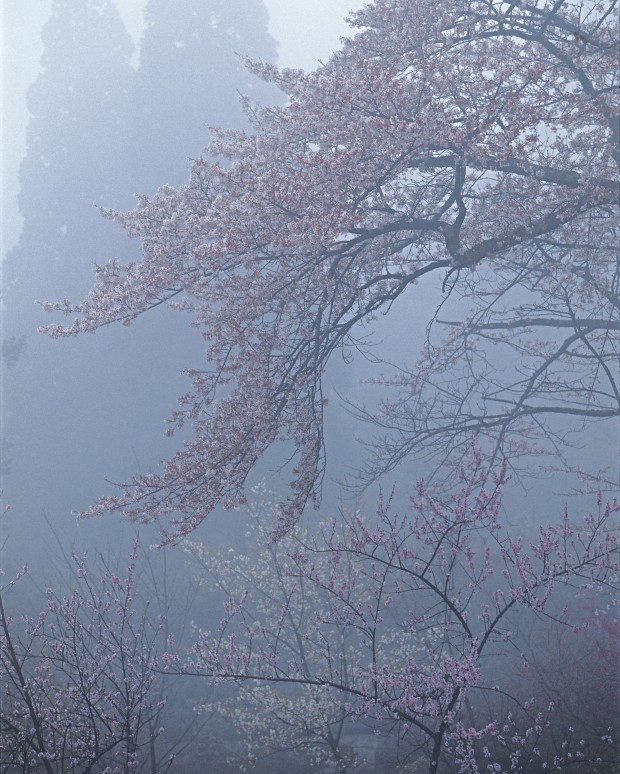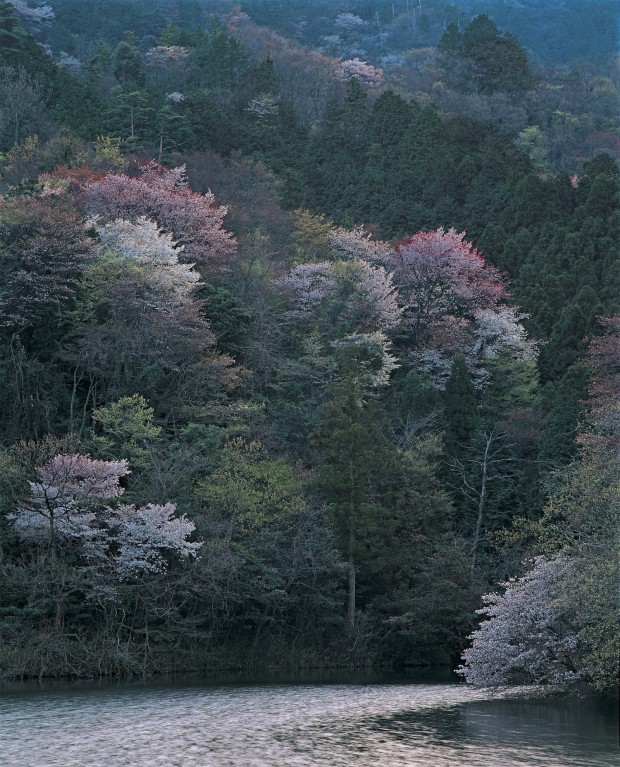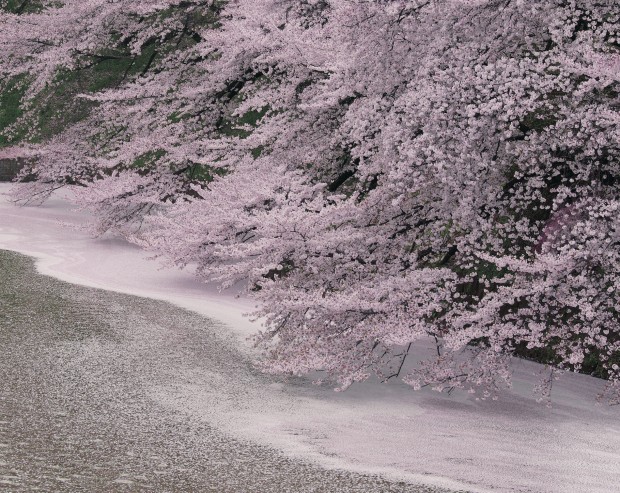The poetic beauty of Japanese cherry blossoms
“Even on unnamed mountains,
cherry blossoms bloom
and then are scattered away in secret
Such resplendent and illusory beauty.”
Selected text by Fujiwara no Yukinari (972-1027), calligrapher and court official
As the seasons change, people eagerly anticipate the arrival of pink and white cherry blossoms known in Japanese as sakura. Celebrating a cultural affinity to Nature, Japanese people have gathered together every year since ancient times to enjoy the spring flowers. It was believed that deities of rice fields and harvests dwelled among the cherry blossom trees, and banquets held to honor these gods. These gatherings and merry-making served as the precursor to the flower-viewing parties popular today called hanami. In times past, the many mountains of Japan boasted lovely cherry blossom flowers and their beauty has featured in much Japanese literature, poetry, and art. Let’s take a look at sakura’s perceived spiritual power and grace.
Mount Yoshino is Mount Olympus for Japanese poets on sakura
 Mount Yoshino in Nara prefecture. Photographed by Nagasaka Yoshimitsu.
Mount Yoshino in Nara prefecture. Photographed by Nagasaka Yoshimitsu.
From the Heian period (794-1186), Mount Yoshino in Nara prefecture has served as a sort of sacred ground for sakura, and served as inspiration to many just as Mount Olympus has for Western creative minds. The many mountain cherry trees that line the mountain have charmed poets and artists throughout Japanese history, and still today remains as one of the most popular spots to view Japan’s beloved flower. After a spring storm, the white mist creeps in among the cherry blossoms dotting the mountain to produce this surreal and hauntingly beautiful scene. Appearing like the breath of the mountain, the fog wraps itself around through the trees upon which the delicate forms of blossoms stand out, glossy and bright from the moisture.
The ephemerality of cherry blossoms
 Yoshino cherry trees wrapped in mountain fog. Photographed by Takeuchi Toshinobu.
Yoshino cherry trees wrapped in mountain fog. Photographed by Takeuchi Toshinobu.
Contrasted against the milky white scenery, the tree and its blossoms exuded a simple elegance that fascinated photographer Takeuchi Toshinobu. This scene was captured near the town of Tateyama in Toyama prefecture. The mountains’ weather emphasizes the gentle beauty of cherry blossoms and their fleeting nature.
 Native to Japan, mountain cherry trees grace the woody hillsides and add a splash of color to the natural landscape. Photographed by Takeuchi Toshinobu.
Native to Japan, mountain cherry trees grace the woody hillsides and add a splash of color to the natural landscape. Photographed by Takeuchi Toshinobu.
Mountain cherry trees are native to Japan and often grow along mountainsides throughout the country. Aside from flowering season though, it is hard to tell that there even are mountain cherry trees from afar as the tree itself appears not unlike other common types of trees. Yet, suddenly one spring day, flowers begin to bud above the young reddish leaves, and the mountainside is soon awash with the colors of spring. The charming point about mountain cherry is how the blooming trees seemingly melt together with their surrounding landscape to create a very tranquil and soft image.
Once the petals have been scattered away in the wind, cherry blossom trees grow out their fresh green leaves and assume a very normal appearance. The magic of sakura season is its ephemerality; the breathtakingly beautiful vision come quickly and then is soon gone.
 Fallen cherry blossom petals in the moat of the Imperial Palace. Photographed by Miyoshi Kazuyoshi.
Fallen cherry blossom petals in the moat of the Imperial Palace. Photographed by Miyoshi Kazuyoshi.
Hanafubuki (a shower of falling cherry blossoms), hana no chiri (“Yesterday’s flowers are today’s dust”), hana-ikada (flower petal raft, water covered in flower petals) – many phrases in Japanese capture the Japanese aesthetic sense of adoration and beauty for blossoms that will soon fall and disperse.
Chidori-ga-fuchi Park is located around the moat of the Imperial Palace, and is a famous spot for viewing cherry blossoms within central Tokyo. Yoshino cherry trees were planted in the outer garden at the end of the Edo period (1603-1868). From the falling flower petals, we get the impression of transience and ephemerality, yet the flowers take on a new beauty as they fall into the moat. The faint pink dusting of petals on the moat create a gorgeous scene.












